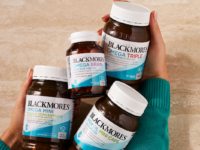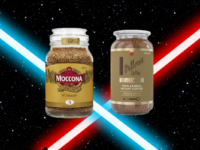Are too many FMCG brands focused on the product itself at the expense of the purpose behind their brand and their point of difference?
Anthony Partington, co-founder and creative director at Melbourne-headquartered brand design agency Brandwell, believes so. He and Brandwell’s fellow co-founder Damien Tonelli are challenging FMCG brands to think beyond what their product does and focus on what their purpose is as a brand. They believe this is the key to resonating and engaging with consumers in a way that will both differentiate them from their competitors and ensure long-term customer loyalty.
“Many FMCG manufacturers are driven to produce a really good product. That can work well for their positioning, but it’s really product-driven and sales driven,” says Partington, who advocates that the key to launching and marketing an FMCG product successfully lies in developing a perception of the product and building a strategic brand that supports that. “From the product on the shelf right down to the tone of conversation used by your customer service team, consistent messaging is vital across all brand touchpoints.”
The importance of purpose
“A key influencing factor of brand perception, is the brand’s purpose,” explains Partington. “We like to work with brands that have a solid purpose, and who are not driven solely by sales, brands that know why they exist, who make sure that flows through everything that they do, and who communicate it. Not companies that produce a product that sits on the shelf and who cross their fingers that it sells itself.”
Tonelli says such an approach ties in with author and consultant Simon Sinek’s philosophy of ‘starting with the why’.
“When we go through consultation or workshops with clients, we ask them that question. We can work out really early on in the relationship whether their brand is going to be successful or not based on their answer to the why. If they give us an answer relating to the what or the when then they are not really grasping what brand identity is all about,” says Tonelli. Partington adds that now more than ever it is important for brands to have a purpose. “People are beginning to put more value on purpose, both in their personal lives and at work. We’ve particularly noticed it in Gen Z, where they are engaging with brands that make them feel good because they align with their beliefs and their values.”
An Australian brand Partington and Tonelli admire as an example of leading with purpose and embracing the why is Who Gives A Crap, a manufacturer of eco-friendly, plastic-free toilet paper that commits a portion of every sale to helping communities in developing countries who lack modern toilets.

“Who Gives A Crap does a great job of demonstrating our point. It has nailed it. Even the name of the brand hints at that cheeky tone, that is all about giving a crap. Each and every touchpoint, from packaging to copy, takes the seriousness out of the issue they’re trying to solve – addressing sanitary conditions in third-world countries.”
Such brand connection will lead to customers being loyal for a long time, he says. “They might have gone from buying the cheapest toilet paper to buying one that may not be the cheapest, but one with a purpose. And they are working with offices and corporates stocking their bathrooms which, in turn, spreads the message to individuals who work there. I think it’s a really, really clever idea.”
A skincare brand with a purpose
One company Brandwell is currently working with is The Gentleman, a Gold Coast-based skincare brand created for men whose purpose is to promote healthy regimes inside and out. One example includes the 30-day Challenge campaign, which uses proven strategies for implementing new, healthy, habits to address issues surrounding mental health in men. Partington cites The Gentleman as an example of a company with founders who really set out to think about what is important to them as a company.
“People want to buy products from a company that’s making social or environmental impact! There’s plenty of research out there that shows everyone feels good doing good.”
Tonelli adds: “Ultimately, you would want your brand to connect with people on an emotional level rather than just existing to fulfil someone’s need for a particular product.”
Internal connection
Partington and Tonelli stress that brands that have identified their purpose need to ensure their team is on board, perhaps even before communicating with customers.
This is important because it can be reflected externally through what a company’s staff say or do. “It’s important for your team and everyone involved to be on the same page and that they understand the values of the brand and share those values. Sometimes we will conduct values-based workshops with clients to make sure they are also getting buy-in from all of the key employees of the company. That also gives them a really clear understanding of what’s happening and what the direction of the brand is.”
The role of packaging
A core way to communicate brand values – and its story – is on the packaging, where a company convey a clear brand message.
“This comes down to designing for a purpose and not just making something look nice. It’s a matter of asking: What are we trying to get across to consumers? What is going to engage this type of consumer, and what are they looking for?
“And you should give them that information as concisely as possible, try not to overcrowd things. It’s really about minimal, really impactful design.”
Good packaging should hint about something – whether it’s subconscious or conscious – so when a consumer looks at it, they think ‘Yes, this is a brand for me’, or it catches their eye on the shelf and makes them pick it up.
“Once they’ve picked the product up it is also about the journey they go through exploring the pack – that’s where content and messaging can be really important – using iconography to make sure you are slowly starting to build that perception of what the brand is all about, and about the product itself. Obviously, you want to highlight the benefits of the product as well as the kind of ethos of the brand and what it is about. Be sure to tick all those boxes.” Adds Tonelli: “It all comes back to the purpose as a base. Of course, you have to have all the essential items on the box, such as a barcode, nutritional panels, ingredient lists and anything else required by regulation. That needs to be there, but then you’ve got minimal real estate to convey your brand message. If you have not focused on that branding part beforehand, you are really going to struggle with it. Your customers are really going to be shooting in the dark as to what the purpose actually is – and that is an expensive exercise.”
Brandwell advocates manufacturers use QR codes to convey information they cannot fit on the packaging.
“One of the biggest things that came out of Covid was the use of QR codes. In Asia, pre-Covid, people were using QR codes through marketing, purchasing, and even to access vending machines. In Australia, we didn’t get take-up before Covid, and no one knew how to use them. But nowadays, pretty much everything we do is going to have a QR code and that allows us to really minimise the content on the pack. If people are interested in knowing more about a product they can scan the code while standing in the store, and learn about the story behind the company, product and packaging.
“The flexibility that QR codes offer brands awesome. It’s such a quick link to take them a bit further on that journey.”
Brandwell is a Melbourne-based design and branding agency that specialises in evolving established brands and bringing new ones into the world. Its main aim is to see the brands it creates succeed by focusing on measurable business results and innovative design. Find out more about Brandwell here.








